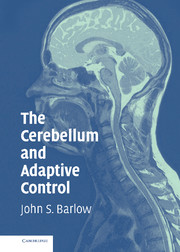Book contents
- Frontmatter
- Contents
- Preface
- Acknowledgments
- PART ONE ANATOMY AND PHYSIOLOGY OF THE CEREBELLAR SYSTEM
- PART TWO CEREBELLAR FUNCTIONS
- 7 Cerebellar Memory, Long-Term Depression, and Long-Term Potentiation
- 8 The Vestibulocerebellum and the Oculomotor System
- 9 The Cerebellum and Cognition
- 10 Timing Functions, Classical Conditioning, and Instrumental Conditioning
- 11 Cerebellar Pathology in Humans and Animals: Genetic Alterations
- 12 Specialized Cerebellum-Like Structures
- PART THREE MODELS AND THEORIES
- PART FOUR SUMMARY AND CONCLUSIONS
- APPENDIX A A Hybrid Analogue/Digital Multiplexer/Multiplier-Based Adaptive Signal Processor
- Author's Note
- Bibliography
- Index
7 - Cerebellar Memory, Long-Term Depression, and Long-Term Potentiation
Published online by Cambridge University Press: 28 October 2009
- Frontmatter
- Contents
- Preface
- Acknowledgments
- PART ONE ANATOMY AND PHYSIOLOGY OF THE CEREBELLAR SYSTEM
- PART TWO CEREBELLAR FUNCTIONS
- 7 Cerebellar Memory, Long-Term Depression, and Long-Term Potentiation
- 8 The Vestibulocerebellum and the Oculomotor System
- 9 The Cerebellum and Cognition
- 10 Timing Functions, Classical Conditioning, and Instrumental Conditioning
- 11 Cerebellar Pathology in Humans and Animals: Genetic Alterations
- 12 Specialized Cerebellum-Like Structures
- PART THREE MODELS AND THEORIES
- PART FOUR SUMMARY AND CONCLUSIONS
- APPENDIX A A Hybrid Analogue/Digital Multiplexer/Multiplier-Based Adaptive Signal Processor
- Author's Note
- Bibliography
- Index
Summary
On a theoretical basis (as summarized in Chapter 13), both Marr (1969) and Albus (1971) invoked memory storage at the parallel fiber–Purkinje cell dendritic tree interface if the parallel fibers and the climbing fibers (both excitatory) were conjointly active. In Marr's theory, the efficacy of these synapses was postulated to become enhanced (facilitated) with such conjoint activation, whereas in Albus's theory, synaptic efficacy became diminished (depressed). Ekerot and Oscarsson (1981) found that impulses in climbing fibers resulted in a depolarization of Purkinje cell dendrites lasting about 100 milliseconds. The authors conjectured that this effect might induce plastic changes in the parallel fiber synapses onto Purkinje cell dendrites, as envisaged in theories of motor learning by the cerebellum.
The diminished synaptic efficacy predicted by Albus was soon discovered (Ito and Kano 1982; Ito, Sakurai, and Tongroach 1982) in the form of long-term depression (LTD; i.e., a significant diminution of the parallel fiber postsynaptic potentials induced in Purkinje cells and lasting for at least 1 hour).
That there is indeed a capability for plasticity is illustrated for a subject (Fig. 7.1) throwing darts at a target (Fig. 7.2) before wearing prism spectacles, while wearing the spectacles, and after removing them. It is the direction of throw of the dart (which is normally determined from the direction of gaze) that undergoes change followed by adaptation or recalibration, which is then followed by a rebound and reverse adaptation upon removal of the prism spectacles.
Information
- Type
- Chapter
- Information
- The Cerebellum and Adaptive Control , pp. 89 - 99Publisher: Cambridge University PressPrint publication year: 2002
